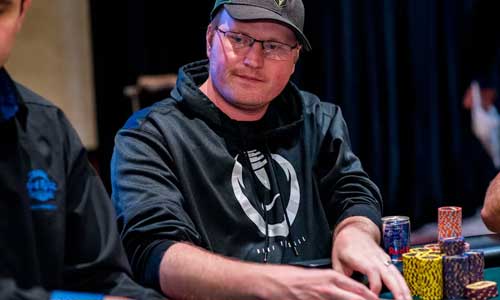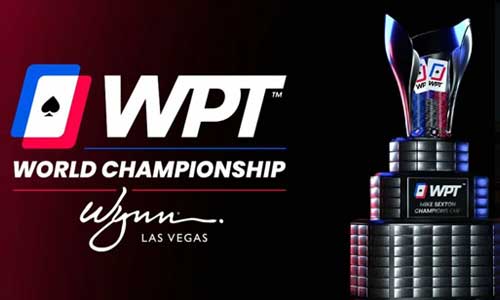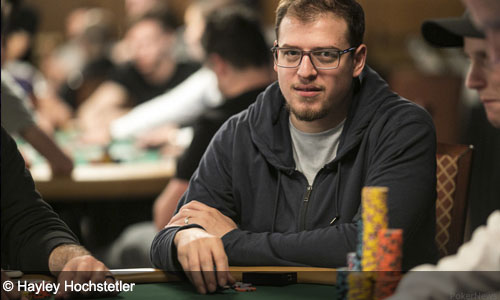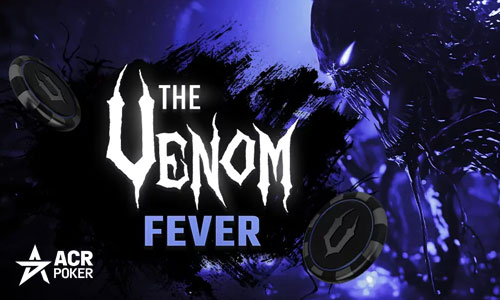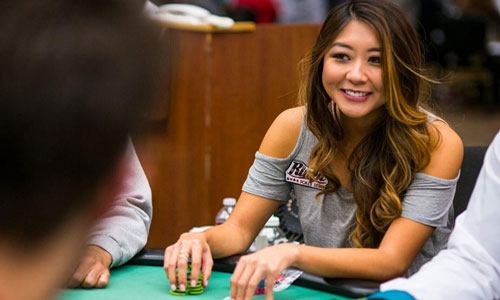Should You Play Aggressive in Short-Handed No-Limit Poker?
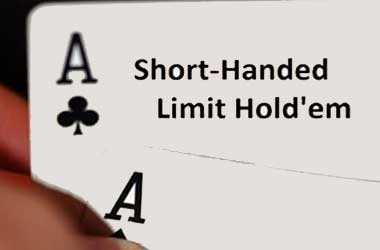
Most players are aware that aggression is an essential ingredient of a winning strategy in short-handed poker. But oftentimes, they don’t know how to apply that principle when game time comes.
In this poker variant, you’re either a fish or a shark, and it’s the proper use of aggression that makes the difference.
Many of the great players excel in short-handed play. That’s because these games are less mechanical and rely more on strategic thinking. Also, good players can exploit the less-skilled ones more than in full-ring games because there are more hands and more decision-making.
Today, we’ll show you how to play aggressive, yet winning short-handed no-limit poker. We’ll talk about:
- Basic short-handed poker strategy
- Power and position approach
- How to play during each poker phase (blinds, early position, late position, post-flop).
At the same time, why not try the following strategy yourself for real money or if one of dedicated UK Poker Sites.
Basic Short-Handed Poker Strategy
With a wrong approach, playing more hands is a sure way to quick losses in short-handed poker. Going all-in every single hand just isn’t going to get the job done. That’s because even fairly-weak players can quickly develop counter-strategies against such playstyle. In fact, they are the easiest type of players to beat in No-limit, regardless of how many people are at the table.
The winning approach is selective aggression, similarly to full tables, just with a much more extensive range of selection. Your strategy should allow you to make one-try stabs in medium-size pots. By that we mean that you need to give up on the pot you’re trying to win on the flop when called.
This is essential in short-handed poker, and if you can’t do it, then your bankroll will undoubtedly swell, and the shark who smooth-called you on the flop will collect the prize.
In these games, you should implement the “raise or fold” philosophy, especially before the flop. If no one has entered the pot yet, then you should raise with any two cards 8 or higher most of the time. If someone beats you to the pot, then don’t follow with anything except the super-premium hands. You don’t stand a chance in any pot where you’re not the aggressor, bare a few rare exceptions.
Power and Position
If I decide to see the flop, I insist on both power and position. In this case, power means that I tend to be the last pre-flop raiser, while position means that I’m the one calling the shots. On the flop, you should raise around 75% of the pot, regardless of your cards. And if you encounter any resistance, including a call on the flop, you should simply give it up, unless you have monster cards.
If you play this way, you will:
- Steal a lot of blinds.
- Almost every flop you encounter will be a three-way or heads-up.
- You will win the majority of the pots on the flop.
- The pots you win will more than compensate for the ones you don’t win.
- On rare occasions where you’ll be holding monster cards, you will get paid off big-time on the flop against a decent hand. You will dictate the tempo, and your flustered opponents will have no other options than to watch as their chips slowly but surely go to your stack.
The Blinds
When you’re in the blinds and someone raises the pot, you shouldn’t worry about being dominated, and focus on defending the hands that you would have folded if you were playing a full-ring poker game.
For instance, in a ten-handed game, having A-8 off-suit in the big blind when a player raises would result in an instant fold by all except the worst players. In a short-handed variant, however, this is a robust hand, worth of a frequent re-raise, and one which you rarely fold.
Early Position
In early position, you should mix it up a bit by varying raising and limping with several hands. You should establish boundaries, though, and not play hands like K-9 suited, A-2 off-suit, or worse. If you get something like a KQ off-suit, suited A-x, QJ off-suit, A-9 off-suit or higher, or any big suited connectors, you should raise.
Late Position
In late position, it’s all about raising and re-raising. Even hands such as QJ can be a raising hand because of the potential extra value you can gain from taking the lead and establishing position. That said, you can raise with any big suited connector or an A-x suited pair.
Post-Flop
On the flop, you must keep playing aggressively, especially if it’s a heads-up pot and you were the aggressor. Short-handed poker is mostly about winning the pots with bluffs and semi-bluffs.
Most players would go all-in with any flash or a straight draw as if it was the strongest hand possible in poker, and it’s correct to do so in many cases. It takes a lot of skill and experience to know when and how to take advantage of an unimproved AK for value on the river, and this is something you should try to learn.
Other Useful Tips on How to Play and Win Short-Hand No Limit Poker
Aside from playing aggressively, several other tips can help you maintain a good winning rate.
- Know your opponents — When there are fewer players at the table, you play more hands against each. Thus, it’s essential to profile their traits and playing style. You can track if your opponents fold or call a lot and identify those who haven’t used the aggressive approach required for this type of poker game. Understand and exploit your table position. For instance, if you are the first to enter the pot, make sure you raise with the other players.
- Develop a bankroll management strategy — Shorthanded play differs from full ring poker tables in many ways, and it also requires you to tighten your bankroll management strategy. Since there will be massive swings during shorthanded play, ensure your bankroll is strong enough to withstand them. Determine how many buy-ins you’ll need to reach the next limit. Additionally, you must be firm about decreasing your limit if you lose several consecutive rounds.
- Be careful on the river — While I encourage aggressive play, you must be strategic when you reach the river stage. You should refrain from making big calls here. It may be more advantageous to fold a little more at the river against value bets. This is because experienced players tend to go more aggressively on the river with high-value hands. So, by identifying your opponents’ tendencies ahead of time, you can save funds at the river.
- Avoid mixing shorthanded with full-ring poker — Even experienced players find it challenging to shift from one poker variant to another quickly, strategy-wise. Therefore, avoid indulging in shorthanded play until you sort your strategy out, especially if you’ve played full table for a long time.
Final Thoughts
As you can see, you shouldn’t be recklessly aggressive every single hand and call all flop bets. Try our approach instead, play it like that for a while, and you’ll start to realize the difference quickly. The worst possible scenario is to find yourself on the flop when you’re not the aggressor because you won’t be able to call that flop. Knowing exactly what’s coming won’t matter, because you can’t stop it no matter what you do. That’s why you should play aggressive, yet thoughtful, and we’ve shown you the most effective way to do it.
If some of your questions remained unanswered after reading this article, please don’t hesitate to drop a comment below.
Hi, I am the Chief Editor of top10pokersites.net, this site is dedicated to all thing poker. I have been working around the poker industry for the last 15 years, with different brands. The main purpose of this site is to keep you uptodate with the industry and offer you the best deals around.

